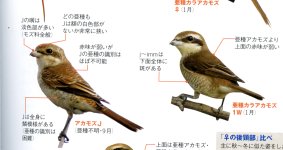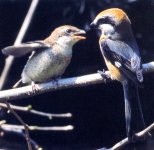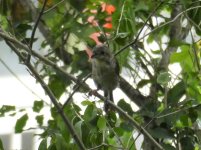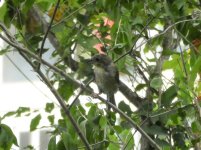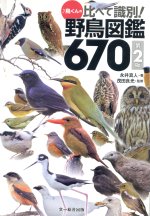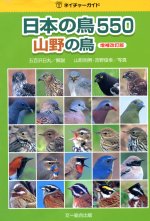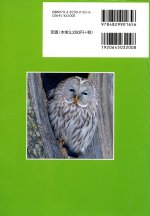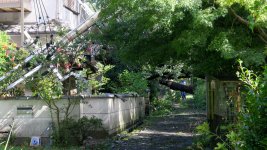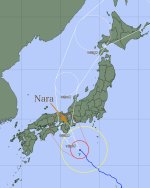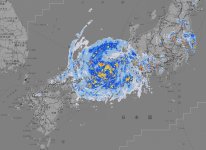Hi Misikuru: I can see where you are coming from on this.
However: Tiger Shrike is 'very scarce' in this region, so I think you would need a much better photo to claim the ID.
(Actually it would also be useful if you specified the location more precisely, since depending on the person, Eastern Japan could be anywhere east of Nagoya, and include most of Honshu and all of Hokkaido.)
I don't see how you could confidently separate it from juvenile Brown Shrike which does apparently breed in northern Honshu. Or even from very young Bull-headed Shrike, which is the default species. I think you
can see a faint mask behind the eye in both photos, but it's not really possible to be sure what is artifact and what true in the photo.
I'm assuming that you didn't see adult Tiger Shrike in the location, otherwise you wouldn't be asking. Did you see any adult shrike of whatever species? If it's a park you go to often, what do you usually see there?
I don't have appropriate photos of my own, but I have scanned photos from Japanese books (which I hope is fair use).
The first shows a September young Brown Shrike on the left and a January bird on the right. I think the September bird could look a lot like yours in the shade with a faint pale brown mask. The head is as you described - brown with a slight greyish shade - and the back is reddish brown.
The second shows a young Bull-headed Shrike being fed. As you can see, the mask isn't there at the beginning.
Maybe someone else will be able to find some feature in your photos that gives a confident ID, but if it was me, I would just leave it as unidentified.
I'm sorry to be negative, but I think you would need a much clearer photo (or other evidence, such as adults being there) to claim a very scarce bird.
